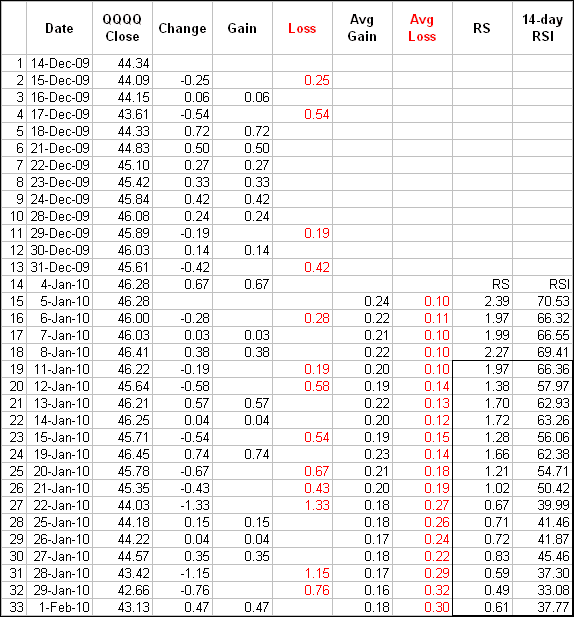Relative Strength Index
Developed by J. Welles Wilder, Relative Strength Index (RSI) is a momentum oscillator that measures the speed and change of price movements. RSI oscillates between zero and 100. Traditionally asset is considered overbought when RSI is above 70 and oversold when below 30.
Overbought refers to a situation in which the demand for a certain asset or security unjustifiably pushes the price of that asset or underlying asset to levels that are not justified by fundamentals. Overbought is often a term used in technical analysis to describe a situation in which the price of a security has risen to such a degree – usually on high volume – that an oscillator has reached its upper bounds.
Oversold is a condition in which the price of an underlying asset has fallen sharply to a level below where its true value resides. This condition is usually a result of market overreaction or panic selling and is generally considered short term in nature. When an asset has been oversold, the price is expected to rebound in an event referred to as a price bounce.
RSI CALCULATION
RSI = 100 – [100 / (1 + RS)] — Where: RS (Relative Strength) = average gain / average loss
This example uses 14 as the number of reporting periods to include when calculating the average gains and average losses. The first components to be calculated are the total average gains and the total average losses. Average gains are calculated by totaling all the gains for the past fourteen reporting periods and dividing by 14. Average losses are calculated in the same manner with the total of all losses for the previous 14 reporting periods summed and divided by 14. The Relative Strength is then converted to an index value and plotted on Wilder’s scale ranging from 1 to 100.
How to use the RSI in stocks
It’s possible to modify the number of periods and use the RSI on various timeframes, however, it’s best to stick to the default parameter of 14. When the RSI crosses 70, it often signals a short-term top in the stock, and when RSI crosses 30, it often signals a bottom. The neutral level of 50 indicates that there is no directional movement.
During trends, the RSI will usually stay contained within certain readings. During an uptrend it typically bottoms above 30 and frequently reaches 80+. During a downtrend the indicator will typically top out before 70 and frequently reach 20 or below. This can be used to confirm trends, and provide entry signals during a trend. During an uptrend, buy if the price drops below 35 (or 40) and then rallies back above it. Place a stop loss below the recent low. Sell when the price moves above 70 (or 80) and then drops back below.

